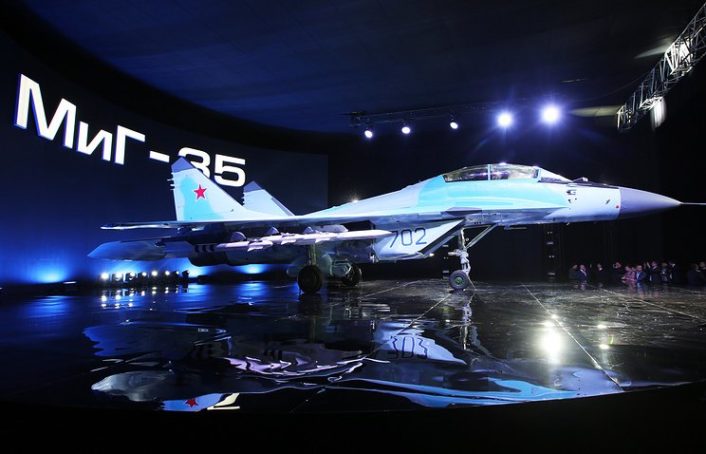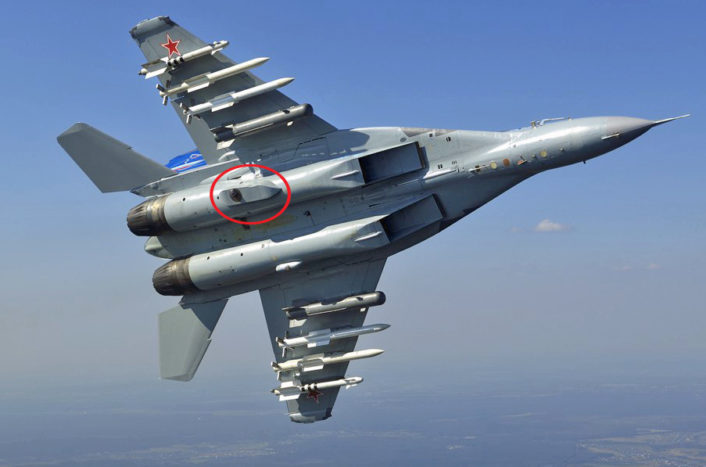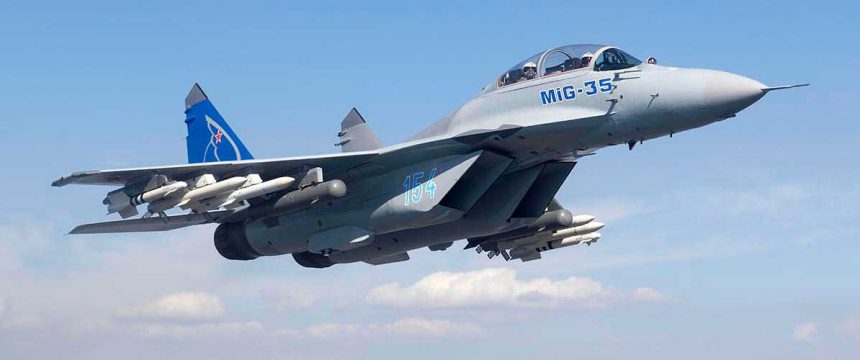MiG-35 Demo is Both Product Debut and Contrast of Russian and Western Doctrine in the F-35 Era.
In a widely publicized event on Thursday, Jan. 26, 2017 the Mikoyan-Gurevich Design Bureau (MiG) parented by United Aircraft Corporation officially demonstrated the new MiG-35 to the Russian government. A subsequent demonstration for export customers was carried out today Jan. 27.
Russian President Vladimir Putin is reported to have viewed the first demonstration via remote video due to poor weather in the region.
The new MiG-35 (NATO reporting name: “Fulcrum Foxtrot”) is a greatly upgraded aircraft based on the earlier MiG-29 airframe. Significant upgrades on the MiG-35 include a completely new fly-by-wire flight control system, vastly improved cockpit, substantially upgraded avionics and an overall design philosophy that provides an enhanced degree of operational autonomy on the MiG-35 compared to earlier Russian combat aircraft. The MiG-35 will also integrate precision-guided targeting capability for air-to-ground weapons, a rarity in previous Russian air-ground doctrine.

There is a significant engine upgrade on the new MiG-35. The aircraft uses two impressive Klimov RD-33OVT engines fitted with bi-directional thrust vectoring nozzles. This contrasts aircraft like the current Russian Su-35 and the U.S. F-22 Raptor that only use single-axis vertical thrust vectoring.
This marks a fascinating departure from previous Soviet-era combat aircraft capabilities while retaining the Russian penchant for lower unit cost in exchange for numerical superiority, a doctrine that has pervaded Russian military thinking for the entire century.
The Russians have always traded unit capability for numerical superiority, relying on the hope that quantity would beat quality in a major conflict. Interestingly, this doctrine has shifted moderately toward a centrist mix of quality and quantity apparently in search of the best solution for indigenous use as well as attracting export buyers.
The new MiG-35 is an example of this shift.
Russia has included significant sensor and capability upgrades on all recent combat aircraft, especially ones intended for the export market. Additionally, the reported domestic production for MiG-35 is only 37 aircraft, a very small acquisition by older Soviet and even modern Russian standards. A larger production capacity is earmarked for export sales, likely in the form of a 50-unit order from Egypt.
Reports indicate the Egyptian MiG-35s are to be fitted with a new advanced targeting pod, the PPK targeting pod from Precision Instrument Systems. The new PPK thermal imager/TV and laser rangefinder allows the MiG-35 to autonomously guide precision munitions similarly to how the current U.S. F-15E Strike Eagle prosecutes ground targets. Previous Russian doctrine relied heavily on ground vectors to attack targets.
Somewhat interestingly, the indigenous MiG-35 is fitted with a Russian NPK-SPP OLS-K electro-optical targeting system. The OLS-K targeting and surveillance system is mounted directly to the aircraft below the right (starboard) fuselage on the engine nacelle in front of the elevators. It is not a removable pod. The OLS-K sensor can track moving vehicles from 20 kilometers and surface contacts at sea for 40 kilometers. An integrated laser rangefinder computes target distance up to 20 kilometers for weapons employment. There is also laser designation for guided weapons built into the pod.

The new MiG-35 provides Russia and export customers with a uniquely scaled precision strike capability that may be a better fit for countries with smaller defense budgets. The MiG-35 contrasts aircraft like the larger (and more expensive) Sukhois. If a client’s ground strike requirements involve shorter range in a tactical rather than strategic setting the MiG-35 may be the right size and cost aircraft.
Given recent problems throughout the Middle East and Africa with managing strike accuracy and reducing the exposure to collateral damage from air strikes this may be an important export asset for Russia and its defense industry clients.
Image credit: Mikoyan-Gurevich Design Bureau
Related articles
















